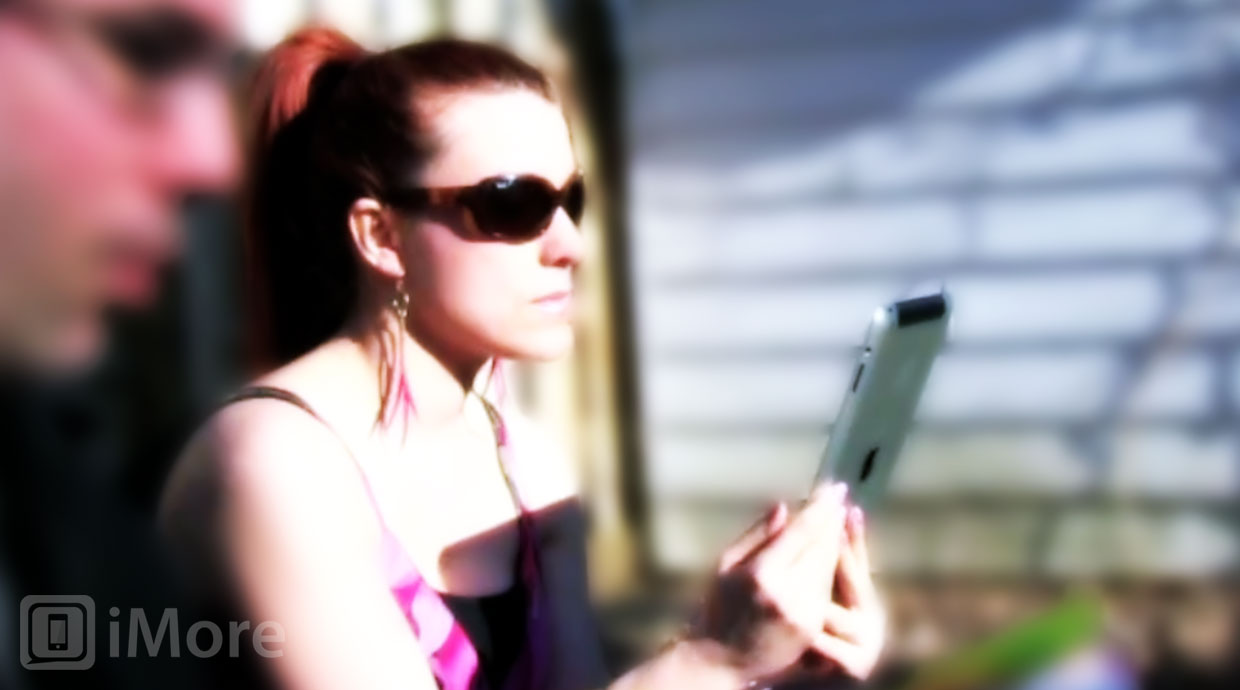
Have you ever had trouble reading, watching, playing, or otherwise using your iPhone while caught out in direct sunlight? Here's an easy workaround that's doesn't involve taking your iPad back inside
The iPad has a big, bright beautiful display that looks absolutely amazing under normal condition but, because it's glossy, can become reflective or washed out to the point of uselessness under the glare of direct sunlight. Luckily, all hope is not lost!
Here's what's going on. The iPad has an in-plane switching (IPS), light-emmiting diode (LED), liquid crystal display (LCD) that produces crisp, clear colors under normal conditions. It's not laminated the same way the iPhone screen is, so it's even slightly more reflective when it catches rays.
So, what can be done? There are various anti-glare screen protectors you can try out, but those aren't practical to put on and take off every time you're out in the sun.
Chances are, however, if you're out in the sun, you'll have a pair of sunglasses. Like any self-respecting beach boy or bikini chic, they might even be polarized. If not, pick up a pair that is. You can also use passive 3D glasses if you're geeky enough to have those handy. They can make all the difference in the world when it comes to reading the web or eBooks, watching movies or TV shows, using apps or playing games.
To explain why, we're turning to Mobile Nations' own Stephane Koenig, our very own ocular science guy!
How to use polarized sunglasses (or passive 3D glasses) to see your iPad in direct sunlight
I'll spare you the fascinating explanation (it really is a clever trick of light that facilitates passive 3d, non- reflective coatings and a bunch of other good things).
Phew! So we can skip ahead to putting our polarized sunglasses on!
If you experience a black screen with your sunglasses on turn the iPad 90 degrees... i.e. if it's black in portrait rotate it to landscape and vice-versa.
Master your iPhone in minutes
iMore offers spot-on advice and guidance from our team of experts, with decades of Apple device experience to lean on. Learn more with iMore!
The effect is dramatic, gradual and proportional to the amount of turn.
It happens because the lenses block light polarized in one dimension and LCD panels produce light polarized one (potentially different) dimension as well. Coatings on some panels reduce this effect in order to reduce reflection/glare at the cost of lower 'compatibility' with polarized glasses. Sometimes they oppose each other and no light gets through. It's sort black magic if you don't understand what happening.
Here's a simple explanation and here's a deeper explanation -- scroll down past the science bit to see examples of uses...
- Radio: AM/FM radio waves are polarized which is why radio antenna tend to be vertical for best reception and TV antennas are horizontal
- Shop windows have similar coatings to reduce ambient reflection - they want you to see the products not yourself.
- Passive 3D glasses work because the left eye only lets light through polarized one way and the right eye lets light through polarized the other way. The projector polarizes the light from alternate frames to give a pseudo-3d effect because each frame show an image slightly with perspective slightly off-set from the other. Try tilting your head during the performance to test the extent of this technology. Better yet... pop out the lens, place them on top of one another then turn one of them 90 degrees to block out all light.
- Camera lenses have coating which can remove reflection from windows (an a commensurate amount of light) in the same way that some windows have coats as above
- If you view car window through polarized lenses you can see the stress lines in the glass, manufacturers exploit this as one of the quality tests for their tempered glass.
Thanks Steph! So bottom line, if you want to take your iPad to the beech or the pool, out on a sunny street or park, or anywhere where there will be bright, direct sunlight, just bring a good pair of polarized sunglasses with you!
Bonus tip: Because of the way the iPhone display is constructed, polarized sunglasses can greatly reduce glare and increase visibility in both portrait and landscape mode!
Variable - Polarized sunglasses on Amazon.com - Buy now
Senior Editor at iMore and a practicing therapist specializing in stress and anxiety. She speaks everywhere from conferences to corporations, co-host of Vector and Isometric podcasts, follow her on Twitter @Georgia_Dow and check out her series at anxiety-videos.com.

